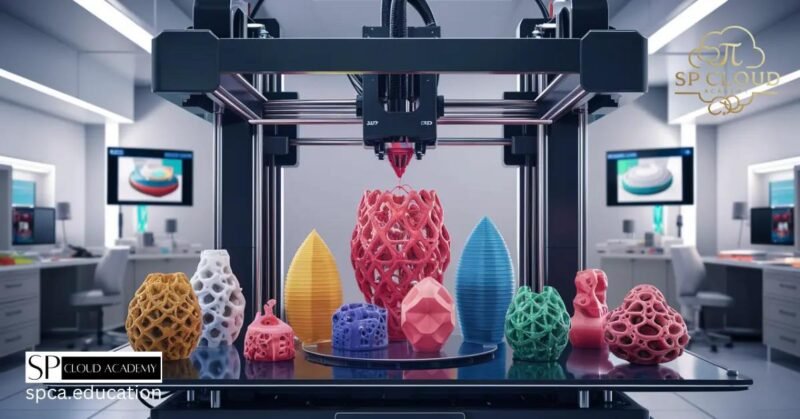The advent of 3D printing technology has heralded a new era in manufacturing and design, with implications for numerous sectors across the global marketplace. Australia, known for its spirit of innovation and forward-thinking approach to technology, is no stranger to this revolutionary advance. In the ever-evolving technological landscape, 3D printers in Australia have become instrumental in transforming various industries, thus fostering a new wave of economic development and design thinking.
The Impact of 3D Printing in Australian Manufacturing
In the manufacturing sector, 3D printing, also known as additive manufacturing, is changing the way products are conceived, developed, and produced. By building items layer by layer from a digital file, production processes that once took weeks can now be completed in mere hours. This acceleration allows Australian manufacturers to bring products to market much faster, offering a significant competitive edge.
Moreover, 3D printers enable the creation of complex geometries that are difficult or even impossible to achieve with traditional manufacturing techniques. This characteristic opens up new opportunities for customization and innovation, allowing manufacturers to cater to niche markets and personalized consumer demands with relative ease.
3D Printing’s Role in Australian Healthcare
The healthcare industry is another beneficiary of 3D printing’s prowess. In Australia’s medical field, additive manufacturing is used to create patient-specific implants, prosthetics, and anatomical models for surgical planning. The ability to produce bespoke healthcare solutions has significantly improved patient outcomes and has the potential to reduce the overall costs of medical devices through localized production.
Similarly, the dental industry has embraced 3D printing for the production of crowns, bridges, and orthodontic appliances. Touted for its precision and efficiency, this technology is streamlining processes within dental laboratories, leading to quicker patient treatment times and enhanced service delivery.
Education and Research Embracing 3D Printing Technology
Education and research institutions in Australia have also enthusiastically adopted 3D printing. Universities, technical colleges, and even some secondary schools now offer courses dedicated to teaching the principles and applications of additive manufacturing. As a result, students are gaining hands-on experience with this cutting-edge technology, preparing the next generation of Australian engineers, designers, and scientists for a future where 3D printing is ubiquitous.
In research environments, 3D printers are an invaluable tool for prototyping new products and conducting material studies. For a country with a strong focus on scientific progress and innovation, the versatility and flexibility that 3D printing offers cannot be overstated.
The Importance of Sustainability in 3D Printing
Australia’s commitment to sustainability has also found a partner in 3D printing. The precision of additive manufacturing leads to minimal waste compared to subtractive methods, aligning with national goals to reduce environmental impact. Furthermore, as the technology becomes more widespread, there is increasing research into the use of recycled materials, further enhancing the sustainability aspect of 3D printing.
In the drive towards a circular economy, 3D printing offers an additional advantage by facilitating the repair and refurbishment of existing products. Instead of discarding damaged goods, parts can be 3D printed to prolong the life of products, thus cutting down on waste.
The Commercial Success of 3D Printing Ventures
Commercial enterprises in Australia have not been slow to recognize the potential of 3D printing. Numerous startups and established companies alike are capitalizing on the versatility of 3D printers to offer specialized services ranging from architectural models to custom automotive parts.
What makes 3D printing particularly appealing for entrepreneurship is the relatively low barrier to entry. With open-source designs and affordable printer models available, individuals and small businesses can venture into manufacturing without the need for significant investment in traditional factory setups.
Challenges and Future Outlook of 3D Printing in Australia
Despite the exciting advancements, there are challenges facing the broader adoption of 3D printers in Australia. One significant hurdle is the current level of skilled professionals who specialize in additive manufacturing technologies. To fully realize the promise of 3D printing, workforce development through education and training must keep pace with technological advancement.
Another issue revolves around the intellectual property rights and regulatory considerations that arise from the proliferation of 3D printing. As the technology evolves, so too must the frameworks that govern its use, ensuring that innovation flourishes within a well-defined legal environment.
Looking ahead, there is little doubt that 3D printing will continue to play a pivotal role in transforming Australian industries. As the technology matures and becomes more accessible, its potential applications are bound to expand, further embedding itself into the fabric of Australia’s dynamic economy. By fostering collaboration between industry, academia, and government, Australia can leverage 3D printing to cement its position as a leader in technological innovation.
In conclusion, 3D printers are revolutionizing traditional industry norms and unlocking new opportunities within Australia’s technological landscape. This disruptive innovation is not only shaping the present but also charting the course for a future that champions efficiency, customization, and sustainable growth. As industries adapt and integrate these printers into their everyday operations, we are witnessing a remarkable transformation in the way Australians design, produce, and consume products. The ripple effect of this technological revolution is reinforced by the national ethos of embracing change and driving invention, further establishing Australia as a hub for 3D printing excellence.






